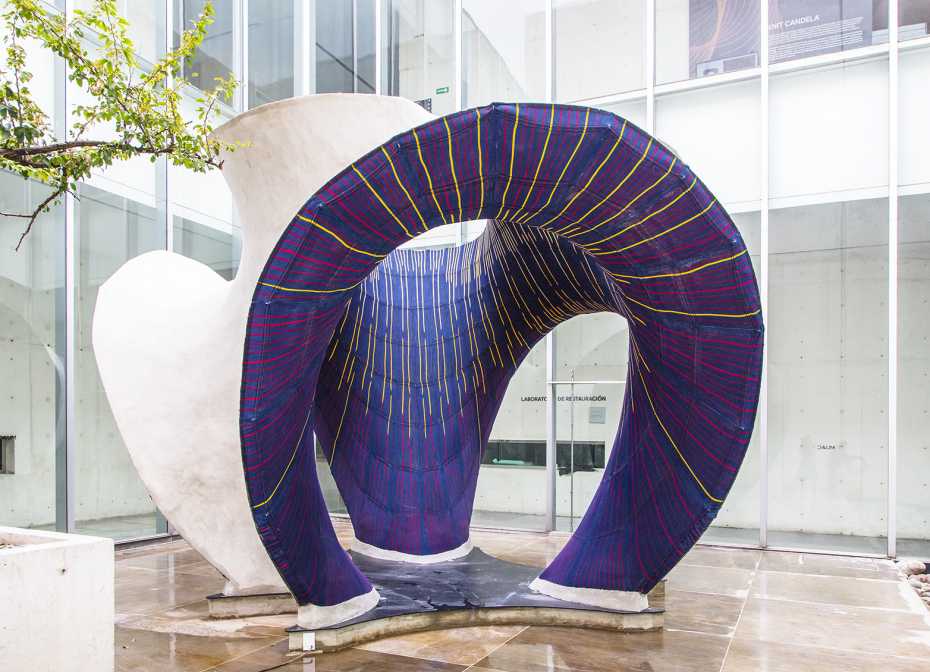
[Image above] Credit: Mariana Popescu, ETH Zurich
It is interesting to see what researchers and industry have done with concrete lately.
They reinforced it with tire fibers and 3D-printed a bridge with it. They made it stronger and more environmentally friendly by incorporating graphene and a binder made of fly ash.
Researchers also built small 3D-printed homes, bigger 3D-printed homes, and even 3D-printed castles with the material.
Now, researchers at ETH Zurich are “knitting” together a formwork structure. Ph.D. students Mariana Popescu and Lex Reiter developed a technology that would replace traditional formwork with a knitted textile. Using knitted textiles in architecture would shorten construction time and save money in materials and labor, according to the researchers in an ETH Zurich news release.

An industrial knitting machine creates the textile. Credit: Lex Reiter, ETH Zurich
Popescu and Reiter designed the textile on a computer. They used an industrial-sized knitting machine to make four long double-layered strips, each serving a different purpose. The lower layer is the inside ceiling, or the colorful outward-facing ceiling of the structure, while the upper layer functions as the working layer, with sleeves that hold cables and balloon pockets that eventually become hollow cavities for weight reduction.

Inside KnitCandela. Credit: Maria Verhulst, ETH Zurich
The knitted formwork was attached to the main curved concrete shell and sprayed with a cement mixture. After hardening, fiber-reinforced concrete was added for strength. The material itself weighs 25 kilograms (a little over 55 pounds) and the cable net weighs close to 30 kilograms (66 pounds), according to the release.

The upper layer of KnitCandela has sleeves that hold cables and pockets with balloons that become cavities for reducing weight. Credit: Mariana Popescu, ETH Zurich
The entire project, named KnitCandela, builds on previous research conducted by ETH professor of architecture and structure Philippe Block and his team in their HiLo concrete roof project, which we reported on last year.
Popescu says their technology simplifies the construction process. “Knitting offers a key advantage that we no longer need to create 3D shapes by assembling various parts,” she explains in the release. “With the right knitting pattern, we can produce a flexible formwork for any and all kinds of shell structures, pockets, and channels just by pressing a button.”
KnitCandela is a collaboration between the research team, Zaha Hadid Architects, and Architecture Extrapolated. The structure will be on display at the Museo Universitario Arte Contemporáneo in Mexico City through March 2019.
Watch the video below to see how KnitCandela is assembled.

Credit: ETH Zurich, YouTube
Author
Faye Oney
CTT Categories
- Cement
Spotlight Categories
- Member Highlights


